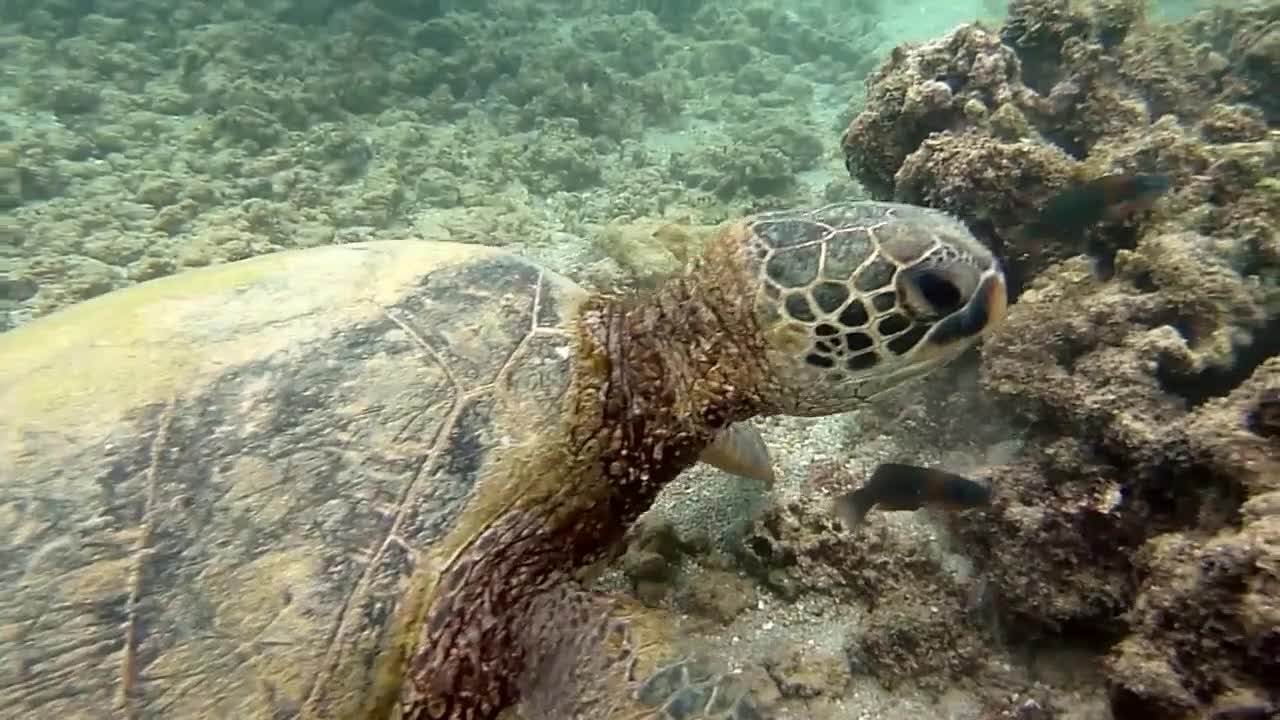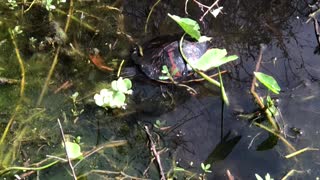Premium Only Content

Lovely sea turtle eating
I was diving and suddenly bumped into this lovely sea turtle eating. It was so cute that I couldn't not film it - plus, it was an awesome experience!
Sea turtles (superfamily Chelonioidea), sometimes called marine turtles, are reptiles of the order Testudines and of the suborder cryptodira. The seven existing species of sea turtles are: the green, loggerhead, Kemp's ridley, olive ridley, hawksbill, flatback, and leatherback.
--
he majority of a sea turtle's body is protected by its shell. The turtle's shell is divided into two sections: the carapace (the dorsal portion) and the plastron (the ventral portion). The shell is made up of smaller plates called scutes. The leatherback is the only sea turtle that does not have a hard shell. Instead, it bears a mosaic of bony plates beneath its leathery skin.
In general, sea turtles have a more fusiform body plan than their terrestrial or freshwater counterparts. The reduced volume of a fusiform (tapering at both ends) body means sea turtles cannot retract their head, legs, and arms into their shells for protection like other turtles can. However this more stream-lined body plan reduces drag in the water and allows the turtle to swim more easily.
The leatherback is the largest species of sea turtle. Measuring 2–3 meters (6–9 ft) in length, and 1-1.5 m (3–5 ft) in width, weighing up to 700 kilograms (1500 lb). Other species are smaller, being mostly 60–120 cm (2–4 ft) and proportionally narrower.
--
Sea turtles, along with other turtles and tortoises, are part of the order Testudines. All species except the leatherback are in the family Cheloniidae. The leatherback is the only extant member of the family Dermochelyidae.
The origin of sea turtles goes back to the Late Jurassic (150 million years ago) with genera such as Plesiochelys, from Europe. In Africa, the first marine turtle is Angolachelys, from the Turonian of Angola. However, neither of these are related to extant sea turtles; the oldest representative of the lineage leading to these was Desmatochelys padillai , from the Early Cretaceous.
A lineage of unrelated marine testudines, the pleurodire (side-necked) bothremydids, also survived well into the Cenozoic. Other pleurodires are also thought to have lived at sea, such as Araripemys.[8] Sea turtles constitute a single radiation that became distinct from all other turtles at least 110 million years ago.
Sea turtles' limbs and brains have evolved to adapt to their diets. One of the main things sea turtles consume is jellyfish and the use of their limbs to hold, swipe, and forage their food has helped them eat more efficiently. Originally sea turtles' limbs have evolved for locomotion but now they have evolved to aid them in the ability to get food. In addition to the evolution of limbs, sea turtles' brains have also evolved. The frontal cortex of a sea turtle's brain was not very developed. This underdevelopment caused the sea turtles to not be able to learn from their surroundings.
-
 0:45
0:45
PeanutThree
4 years agoTurtle eating
75 -
 LIVE
LIVE
JULIE GREEN MINISTRIES
1 hour agoLIVE WITH JULIE
19,422 watching -
 DVR
DVR
Chad Prather
13 hours agoFinding God’s Timing in a World of Pressure
9021 -
 LIVE
LIVE
The Pete Santilli Show
1 hour agoMORNING STREAM Tuesday September 9, 2025 💣 THE PETE SANTILLI SHOW & SANTILLI REPORT (Monday 9/8)
391 watching -
 LIVE
LIVE
The Chris Salcedo Show
10 hours agoWhat Does The Data & Science Say?
364 watching -
 20:14
20:14
Jasmin Laine
16 hours agoSHOCKING SLIP-UP: Liberals Accidentally CONFIRM Oil & Gas PHASE-OUT
23.5K22 -
 38:14
38:14
The Official Corbett Report Rumble Channel
1 day agoWar Is A Crime
3.59K19 -
 LIVE
LIVE
BEK TV
23 hours agoTrent Loos in the Morning - 9/09/2025
266 watching -
 LIVE
LIVE
The Bubba Army
22 hours agoMore Epstein Files Dropped! - Bubba the Love Sponge® Show | 9/09/25
2,410 watching -
 LIVE
LIVE
FyrBorne
19 hours ago🔴Warzone M&K Sniping: How To Harness The Beast (Of Sniping)
113 watching